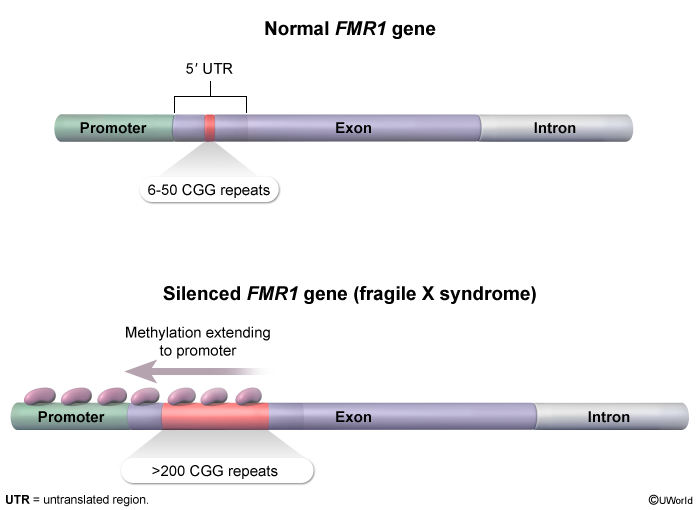Fragile X Syndrome
Article Sections
Introduction
Fragile X syndrome (FXS) is the most common inherited cause of intellectual disability and a significant genetic cause of autism spectrum disorder (ASD). It is an X-linked disorder caused by a mutation in the FMR1 gene on the X chromosome.
Pathogenesis
FXS is due to an unstable CGG trinucleotide repeat expansion in the FMR1 gene on the long arm of the X chromosome (Figure 1). FMR1 normally has 6-50 CGG trinucleotide repeats in the 5′ untranslated region that can potentially expand during meiosis in oocytes. Expansion over generations can lead to >200 CGG trinucleotide repeats (ie, full mutation). This mutation causes hypermethylation of the gene, which silences the gene and prevents transcription of the associated fragile X messenger ribonucleoprotein (FMRP). Because FMRP is involved in the development and plasticity of neurons, silencing of the gene in FXS results in impaired neural development.
Continue Learning with UWorld
Get the full Fragile X Syndrome article plus rich visuals, real-world cases, and in-depth insights from medical experts, all available through the UWorld Medical Library.
Figures

